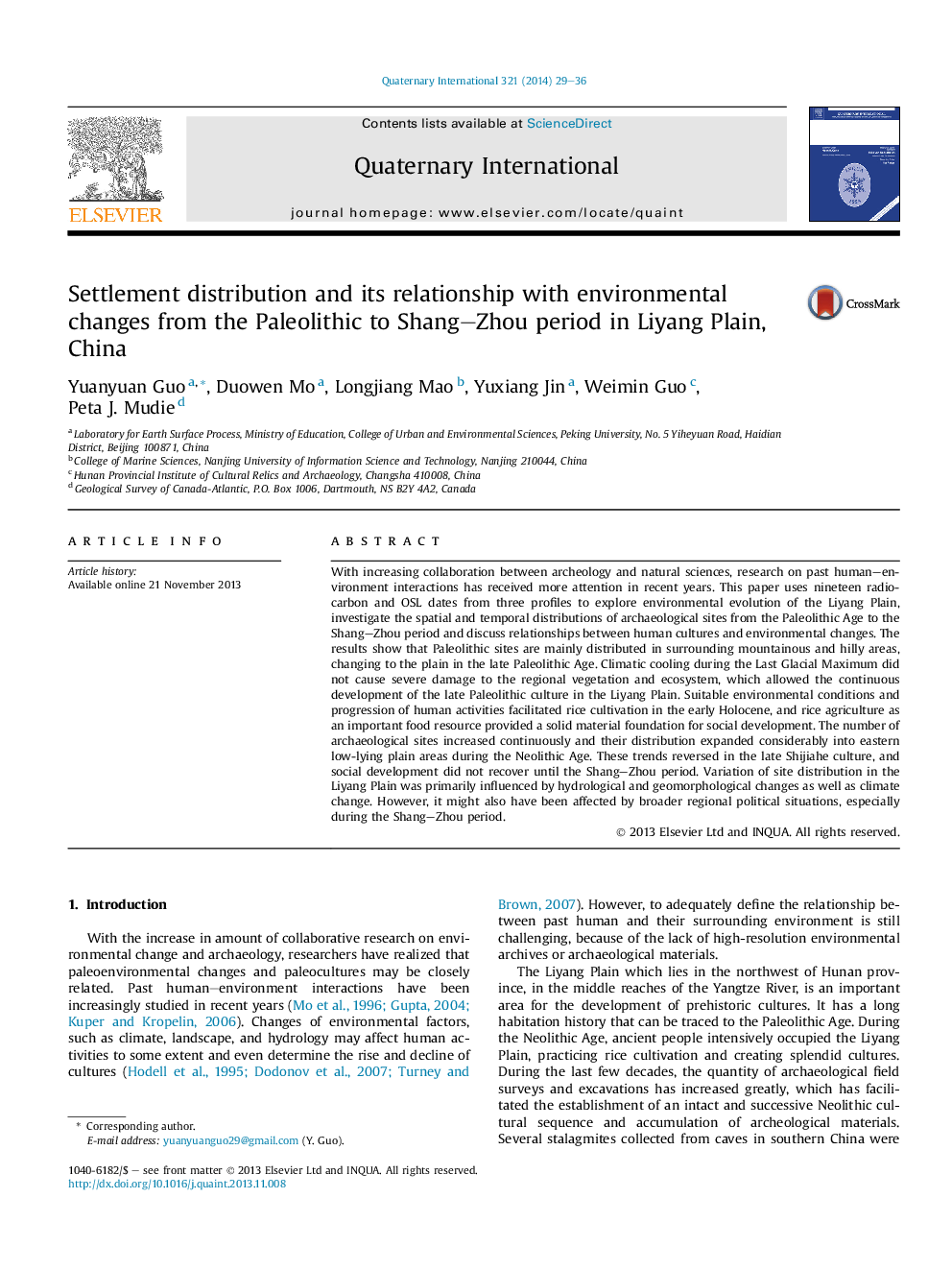| Article ID | Journal | Published Year | Pages | File Type |
|---|---|---|---|---|
| 1041660 | Quaternary International | 2014 | 8 Pages |
With increasing collaboration between archeology and natural sciences, research on past human–environment interactions has received more attention in recent years. This paper uses nineteen radiocarbon and OSL dates from three profiles to explore environmental evolution of the Liyang Plain, investigate the spatial and temporal distributions of archaeological sites from the Paleolithic Age to the Shang–Zhou period and discuss relationships between human cultures and environmental changes. The results show that Paleolithic sites are mainly distributed in surrounding mountainous and hilly areas, changing to the plain in the late Paleolithic Age. Climatic cooling during the Last Glacial Maximum did not cause severe damage to the regional vegetation and ecosystem, which allowed the continuous development of the late Paleolithic culture in the Liyang Plain. Suitable environmental conditions and progression of human activities facilitated rice cultivation in the early Holocene, and rice agriculture as an important food resource provided a solid material foundation for social development. The number of archaeological sites increased continuously and their distribution expanded considerably into eastern low-lying plain areas during the Neolithic Age. These trends reversed in the late Shijiahe culture, and social development did not recover until the Shang–Zhou period. Variation of site distribution in the Liyang Plain was primarily influenced by hydrological and geomorphological changes as well as climate change. However, it might also have been affected by broader regional political situations, especially during the Shang–Zhou period.
